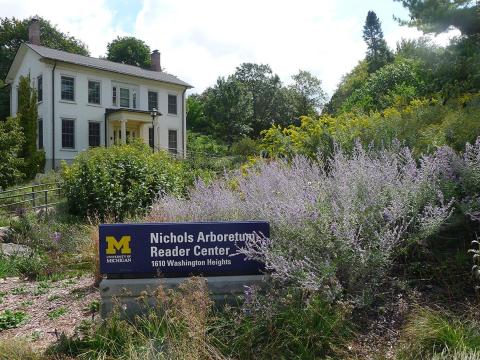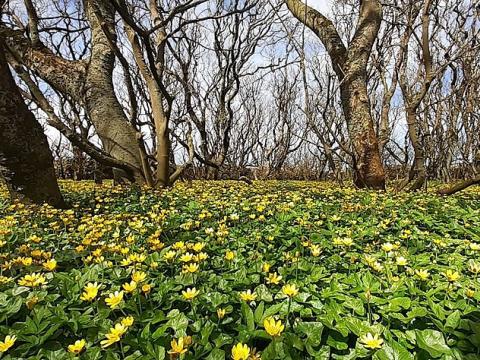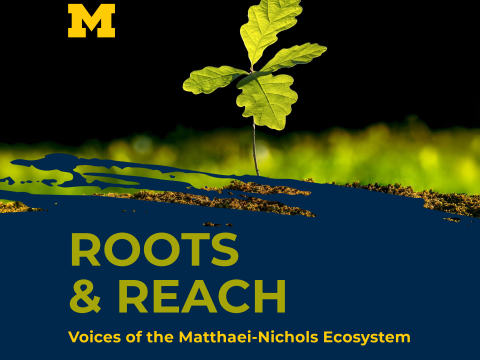
Mrs. Franklin D. Roosevelt peony
As you walk through the garden at Nichol’s Arboretum, you might notice that several varieties of peonies are named after women. For instance, there are peonies named after Eleanor Roosevelt, Anne Spencer, and Alice Harding, to name a few. Some of these women were peony cultivators, and famous ones at that, but many of the women’s names you’ll find had no connection to peonies at all. You might expect that a plant’s name would describe its appearance, scent, or other qualities in some way, and they often do, but when it comes to flowers created for show, naming them after women is not uncommon at all. This practice doesn’t stop with the culture of peonies, or with the more distant past, either. Stroll through the Keukenhof tulip gardens in the Netherlands, for example, and you’ll find tulips named after Beyoncé, among many other recognizable stars of our own cultural moment.
It might be exciting to have a flower named after you, and many peony cultivators likely meant it as kind gestures to name a new variety after women in their lives. But when the names of flowers are uncoincidentally feminine time and again, it reinforces a centuries-old association of flowers with women. W.E. Upjohn—donor of many of Arb’s original peonies and president of the American Peony Society in 1923—wrote catalogs that described peony breeds in terms of what he believed were either attractive or undesirable qualities in women. How does reading a woman’s name on a peony label at Nichol’s make you feel and think about the flower? Which words would you use to describe the peony? Would those words be different if the peony had a masculine name? And how does viewing the flower make you think about the woman or women who that name belongs to? Does it make you associate floral qualities (delicate, soft, fragrant) with those women, or women more generally? As “natural” as they may seem, plants are always given cultural meaning, and those meanings depend on our historical time and place.
While peony breeding and sale have largely been male dominated fields of work and culture in the US, a few of the peonies you’ll find in the Arb remind us of the variety of roles that women have played in modern peony history. “Sylvia Saunders” was named by Professor A.P. Saunders, the “father” of modern hybrid peonies, after his daughter. Following her father’s death, Sylvia Saunders (1901-1994) maintained the family correspondence with Henry Francis du Pont, and eventually helped du Pont to plan the 1962 Chelsea Flower Show exhibit that repositioned Saunders peonies in the gardening world. Saunders originally made her career in commercial art and photography after graduating from Radcliffe College, but her influential role in the changing peony world of the mid twentieth century made her president of the American Peony Society from 1968-1970, and she conducted workshops for peony breeders as well. The “Pleas Jubilee” is named after Mrs. Sarah A. Pleas of Indiana, whose Jubilee won best of show in 1916. A prolific breeder, Pleas produced over 50 peonies under her name, and many more that were named by commercial nursery distributors. The Arb boasts her original Jubilee, donated by Upjohn, as well as one of her Opals. “Alice Harding” was named in honor of Alice Harding by renowned breeder Emile Lemoine and won best new French seedling in 1922. Harding is most known for authoring two books for home peony gardens that still prove valuable today. The Book of the Peony (1917) and Peonies in the Little Garden (1923) provided much needed guidelines for home peony gardeners, especially those working with limited space.
While all these contributions are worth celebrating, it’s important to keep in mind that the footing these women had in a male-dominated field was in part a credit to their racial and class privilege in the 20th Century United States. All the women named above were white, received some level of education, and had the financial means to support their horticultural endeavors. The origins of peonies at Nichols Arboretum span an impressively global geographic range, but they still represent only a sampling of the world of peony cultivation and the histories and meanings that peonies might carry with them. Consider the story of a red-striped peony from the family of Anne Spencer. Spencer was a poet of the Harlem Renaissance and avid gardener who developed this peony over a period of eight years from seeds. This peony’s home was Edan Kraal, the garden that Spencer and her husband turned into an artist salon, as well as a space for hosting famous visitors in the fight for civil rights, including Langston Hughes, W.E.B. DuBois, Zora Neal Hurston, Mary McLeod Bethune, Martin Luther King, and Marian Anderson. Edan Kraal is the only documented restored garden of an African American woman in the US.
When you come across a peony at the arb, the tiny hint to its history (which might stretch for 100 years or more!) that you have in that moment is its name. Whose stories are told by the name of each peony, and whose stories are left unsaid? Whose lives, labor, and kinship lines are not reflected in the peony’s name, and how might we go about finding or honoring them?
by Michaela Kotziers


